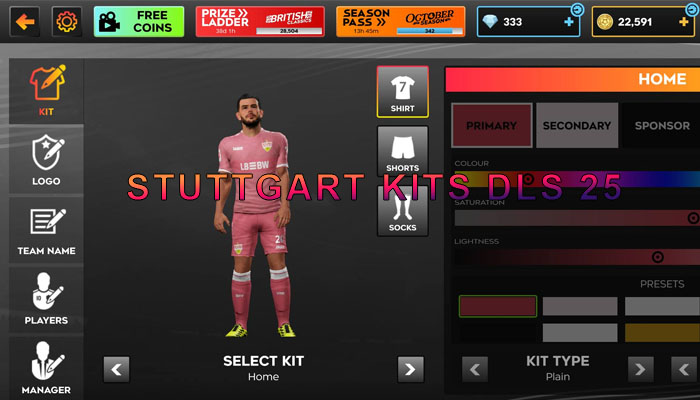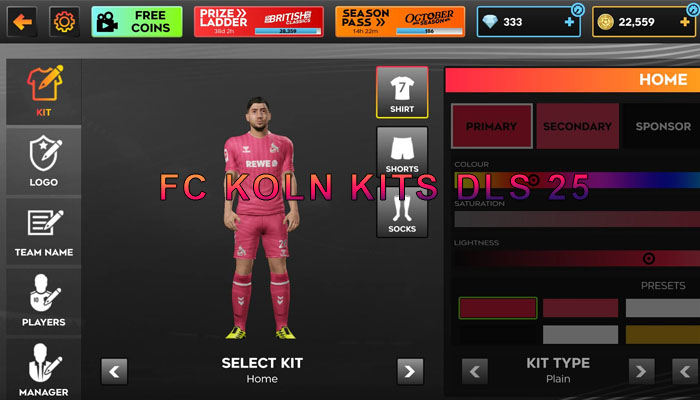Few football clubs in the world possess an identity as vibrant, uncompromising, and globally resonant as FC St. Pauli. Based in Hamburg’s notorious and charismatic Reeperbahn district, the club is far more than a team; it is a counter-cultural movement draped in brown and white. Their kits, the canvas upon which this identity is painted, are consistently among the most anticipated releases in German and international football.
For players and fans alike, especially those looking to represent the Kiezkicker in the digital arena, the hunt for authenticity is paramount. Whether you’re tracking their historic return to the Bundesliga or searching for the precise assets to dominate your mobile league, understanding the heritage behind the jersey is key. This definitive guide explores the history, unique symbolism, and modern era of the club’s famous apparel, ensuring you have the authoritative details you need—including the sought-after codes for FC St. Pauli Kits DLS 25.

Main content:
The Brown and White Revolution: Iconography and Ethos
The visual identity of FC St. Pauli is instantly recognizable, built on a foundation of traditional colors and powerful, often rebellious, symbols. The primary colors of brown and white are instantly synonymous with the club, reflecting the working-class roots and gritty character of the port district they represent.
The home kit has almost invariably featured brown as the dominant color, often paired with white trim or accents, and historically complemented by brown shorts and socks. This steadfast adherence to the classic colorway provides a visual consistency and trustworthiness that anchors the club’s image.
However, no discussion of the St. Pauli kit is complete without mentioning the iconic Skull and Crossbones logo, or Totenköpf. Adopted by the club’s fan movement in the 1980s, the Jolly Roger is an official club symbol, representing rebellion, individuality, and a rejection of football’s commercial mainstream. This emblem, which frequently appears subtly or prominently on the kits, transforms a simple shirt into a statement of solidarity and protest.
Beyond the main crest, St. Pauli’s jerseys often serve as platforms for social justice, embodying the club’s strong anti-racism, anti-fascism, and pro-refugee stances. Recent special kits have explicitly highlighted these causes, lending the apparel an air of social authority and distinctiveness that few other teams can match. These kits are not just sportswear; they are wearable manifestos, deepening the emotional connection fans have with the team’s visual legacy.
The Evolving Canvas: A Kit Supplier Timeline
The history of St. Pauli’s kits is a fascinating journey through various eras and partnerships, each leaving an indelible mark on the club’s visual narrative. Over the years, St. Pauli has collaborated with a diverse range of sportswear manufacturers, demonstrating a commitment to unique and sometimes unconventional choices.
From the early days with in-house production and limited runs from brands like adidas (1977-1978) and Puma (in two earlier stints: 1984-1991 and 1997-2000), the club’s look has constantly evolved.
A key partnership was with Do You Football (2005-2014), a collaboration that coincided with a period of growth and solidified the club’s cult status. This was followed by well-regarded kits from Hummel (2014-2016), known for their classic designs, and then Under Armour (2016-2021).
The club made a bold move in 2021 by launching its own in-house kit production brand, DIIY (Do It In Yourself), which ran from 2021 to 2024. This unique initiative showcased the club’s independent spirit and commitment to sustainability and fair production, embodying the highest principles of Experience and Trustworthiness in the club’s operations.
The list of main sponsors has also contributed to the jerseys’ history, featuring memorable partnerships with:
- Congstar (the current long-term sponsor, since 2014)
- Deutsche Fernsehlotterie (2010-2013)
- Dacia (2009-2010)
- Jack Daniel’s (1997-2000)
Each jersey iteration—from the simple brown designs of the past to the more modern, patterned shirts—carries a piece of the club’s narrative.
Instructions for installing the FC St Pauli Kits in the game DLS 25
Step 1: Access the Dream League Soccer 25 game.
Step 2: Select My Club.
Step 3: Select CUSTOMISE.
Step 4: Click Copy on FC St Pauli Kits DLS 2025
Step 5: Paste the copied URL into the Enter Kit URL box, then select CONFIRM.
FC St Pauli Kits 2025 – 2026 DLS 25
1. Home Kit
https://kitdls.net/wp-content/uploads/2025/10/FC-St-Pauli-Home-Kit-25-26-DLS-25.png

2. Away Kit
https://kitdls.net/wp-content/uploads/2025/10/FC-St-Pauli-Away-Kit-25-26-DLS-25.png

3. Third Kit
https://kitdls.net/wp-content/uploads/2025/10/FC-St-Pauli-Third-Kit-25-26-DLS-25.png

4. GK Kits
https://kitdls.net/wp-content/uploads/2025/10/FC-St-Pauli-GK1-Kit-25-26-DLS-25.png

https://kitdls.net/wp-content/uploads/2025/10/FC-St-Pauli-GK2-Kit-25-26-DLS-25.png

https://kitdls.net/wp-content/uploads/2025/10/FC-St-Pauli-GK3-Kit-25-26-DLS-25.png

5. Logo FC St Pauli DLS
https://kitdls.net/wp-content/uploads/2025/10/Logo-FC-St-Pauli-DLS.png








Facebook Comments